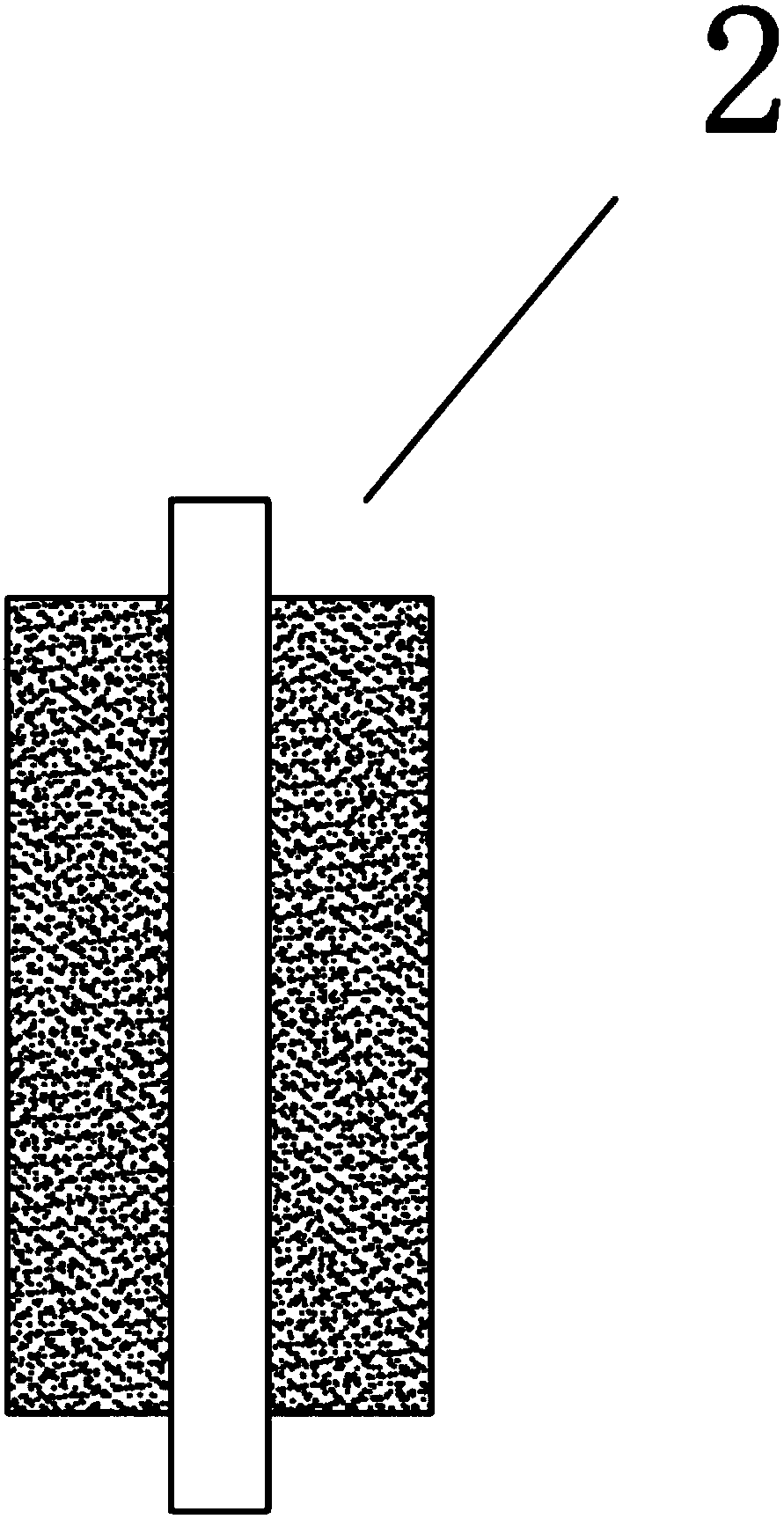Flow field structure of fuel cell or redox flow cell pole plate
A liquid flow battery and fuel cell technology, applied in the direction of regenerative fuel cells, etc., can solve the problems of poor battery uniformity and uneven distribution of reactants on the electrode surface, achieve uniform heat production, avoid the formation of pinholes and change the mechanical structure , Improve the uniformity and operating life of the effect
- Summary
- Abstract
- Description
- Claims
- Application Information
AI Technical Summary
Problems solved by technology
Method used
Image
Examples
specific Embodiment approach
[0030] Specific implementation methods include:
[0031] Bipolar plate 1, used for fluid distribution and heat transfer oil circulation; Membrane electrode assembly 2, the component unit of the fuel cell stack;
[0032] working principle:
[0033] A fuel cell is a device that converts chemical energy stored in compound fuels directly into electrical energy through a chemical reaction. A proton exchange membrane fuel cell usually consists of an anode, a cathode and a proton exchange membrane. During the operation of the battery, the fuel undergoes an oxidation reaction on the surface of the anode catalyst to generate protons and electrons. The protons reach the cathode through the proton exchange membrane, oxygen undergoes a reduction reaction with the protons on the surface of the cathode catalyst to generate water, and the electrons do work through the external circuit to reach the cathode. The redox flow battery is a new type of large-scale electrochemical energy storage d...
Embodiment approach 1
[0036] Embodiment 1: The anode of the bipolar plate 1 adopts a conventional serpentine structure, and the cathode flow field structure adopts a counterflow serpentine structure to test the performance of the DMFC battery. The electrode with an effective area of 50 square centimeters in the membrane electrode assembly 2 is selected to verify the structure of the bipolar plate . The battery discharge process uses 100mA cm -2 Electricity density discharge test is carried out, the anode uses 0.5M methanol solution, the cathode uses air feed, and the cathode and anode are fed with 3 times the metering ratio of feed. The battery operation shows excellent stability, and the 300-hour battery stability test results show that the stability of the battery during operation is better than that of the conventional flow field structure.
Embodiment approach 2
[0037] Embodiment 2: The anode of the bipolar plate 1 adopts a conventional serpentine structure, and the cathode flow field structure adopts a countercurrent parallel structure to test the performance of the DMFC battery. The electrode with an effective area of 50 square centimeters in the membrane electrode assembly 2 is selected to verify the structure of the bipolar plate. The battery discharge process uses 200mA cm -2 Electricity density discharge test is carried out, the anode uses 0.5M methanol solution, the cathode uses air feed, and the cathode and anode are fed with 3 times the metering ratio of feed. The battery operation shows excellent stability, and the 200-hour battery stability test results show that the stability of the battery during operation is better than that of the conventional flow field structure.
[0038] This embodiment can effectively solve the problem of uneven distribution of fluid in the fuel cell / redox flow battery. The fluids in the flow cha...
PUM
 Login to View More
Login to View More Abstract
Description
Claims
Application Information
 Login to View More
Login to View More - R&D
- Intellectual Property
- Life Sciences
- Materials
- Tech Scout
- Unparalleled Data Quality
- Higher Quality Content
- 60% Fewer Hallucinations
Browse by: Latest US Patents, China's latest patents, Technical Efficacy Thesaurus, Application Domain, Technology Topic, Popular Technical Reports.
© 2025 PatSnap. All rights reserved.Legal|Privacy policy|Modern Slavery Act Transparency Statement|Sitemap|About US| Contact US: help@patsnap.com



